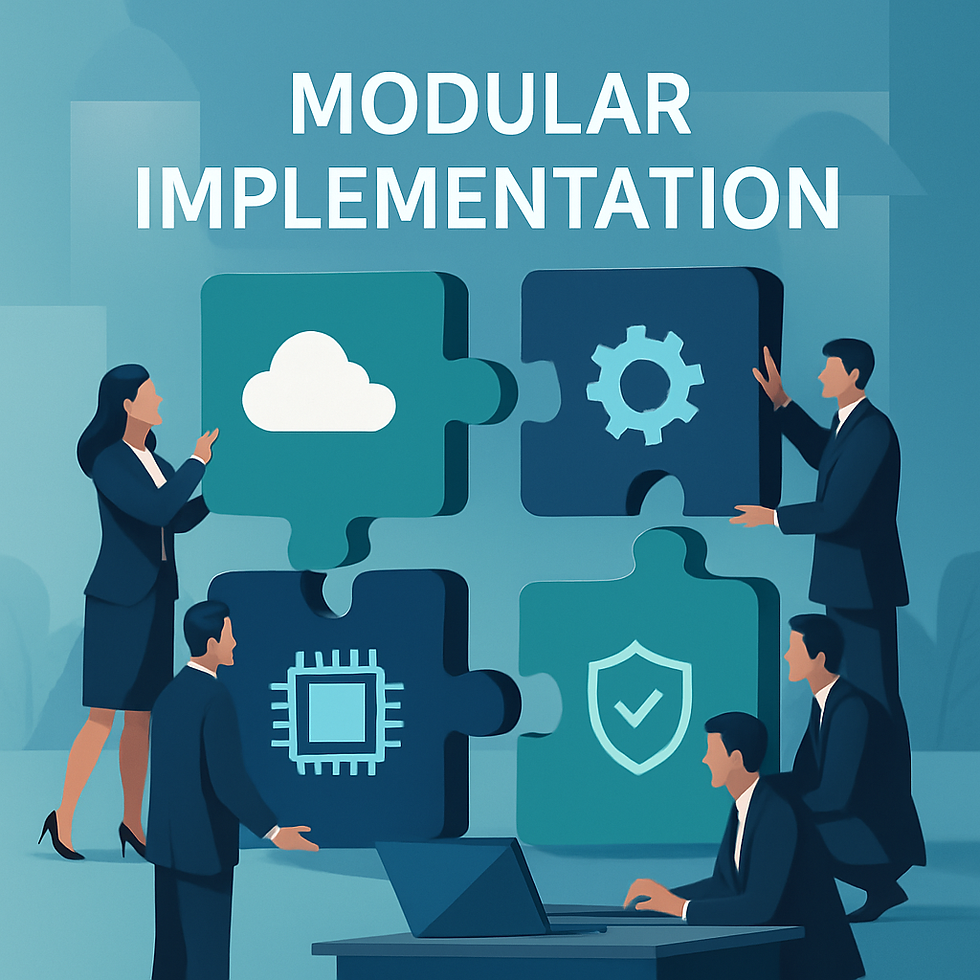AI Implementation Without Disruption
- Anush Chandra Mohan
- May 13
- 3 min read
Updated: Jun 28
In today's competitive landscape, digital transformation is no longer optional—it's imperative. Yet many mid-market companies hesitate to embrace AI and machine learning technologies due to concerns about operational disruption, high implementation costs, and organizational resistance. The good news? AI adoption doesn't have to be disruptive.
At Evanam, we've guided half-dozen of mid-market businesses and counting through seamless AI integration journeys. Here's our proven approach to implementing transformative AI solutions without derailing your day-to-day operations.
The Parallel Path Approach

Traditional technology implementation often follows a "rip and replace" methodology that can cause significant business disruption. Instead, we advocate for a parallel path approach:
Start with systems that run alongside existing operations
Validate results before full transition
Gradually phase out legacy processes as new systems prove their value
This method dramatically reduces risk while allowing your team to adapt gradually to new workflows and capabilities.
Five Pillars of Non-Disruptive AI Implementation
1. Strategic Process Selection
Not every business process requires immediate AI transformation. Begin with processes that:
Have clear, measurable outcomes
Currently consume significant manual effort
Contain repetitive decision-making components
Would benefit from predictive insights
By targeting these areas first, you'll demonstrate quick wins while minimizing operational risk.
2. Modular Implementation

Rather than attempting a comprehensive overhaul, break your AI implementation into modular components. For example:
Start with AI-powered analytics dashboards that provide insights without changing workflows
Add recommendation engines that assist human decision-makers rather than replacing them
Gradually introduce automation for specific sub-processes after building confidence
This building-block approach allows each component to prove its value before expanding the transformation footprint.
3. Data Integration Without Disruption
Data is the lifeblood of AI systems, but integrating data sources often causes implementation headaches. Minimize disruption by:
Implementing read-only connections to existing systems initially
Using API layers that don't require modifications to legacy applications
Creating data lakes that aggregate information without disturbing source systems
Employing ETL processes that run during off-hours
These approaches ensure your AI systems get the data they need without interrupting critical business functions.
4. Human-Centered Change Management

Technology implementation succeeds or fails based on human adoption. Our human-centered approach includes:
Involving end-users in the design process from day one
Providing intuitive interfaces that require minimal training
Focusing on augmenting human capabilities rather than replacing them
Creating "AI ambassadors" within departments to champion adoption
When people see AI as an ally rather than a threat, resistance diminishes and adoption accelerates.
5. Phased Value Realization

Rather than promising transformational results someday in the distant future, structure your implementation to deliver value at each phase:
Phase 1: Enhanced visibility and insights
Phase 2: Decision support and recommendations
Phase 3: Partial automation of routine tasks
Phase 4: Advanced automation and predictive capabilities
This approach builds momentum and organizational buy-in as benefits materialize continuously rather than after a lengthy implementation period.
Case Study: Regional Manufacturing Company
A mid-sized manufacturing company wanted to implement AI-powered demand forecasting and production optimization but couldn't afford any disruption to their 24/7 operations.
Using our seamless integration approach, we:
Deployed parallel forecasting systems that generated predictions without affecting existing planning processes
Provided side-by-side comparisons of AI predictions vs. traditional forecasts
Gradually increased reliance on AI recommendations as accuracy was proven
Fully transitioned after three months of parallel operations
The result? A 37% improvement in forecast accuracy and 22% reduction in inventory carrying costs with zero production disruptions during implementation.
Getting Started: Your Non-Disruptive AI Roadmap
Ready to explore how AI can transform your business without operational disruption?

Start with these steps:
Opportunity Assessment: Identify 2-3 processes with high-value AI potential
Data Readiness Evaluation: Determine what data assets can support initial implementation
Parallel Implementation Planning: Design side-by-side systems that minimize operational risk
Success Metrics Definition: Establish clear KPIs to measure the impact of new AI capabilities
The journey to AI-powered transformation doesn't have to be disruptive. With thoughtful planning and implementation, mid-market companies can harness the competitive advantages of AI while maintaining operational stability.
Evanam specializes in non-disruptive digital transformation for mid-market companies. Contact us to learn how we can help you implement AI solutions that deliver immediate value without operational disruption.



